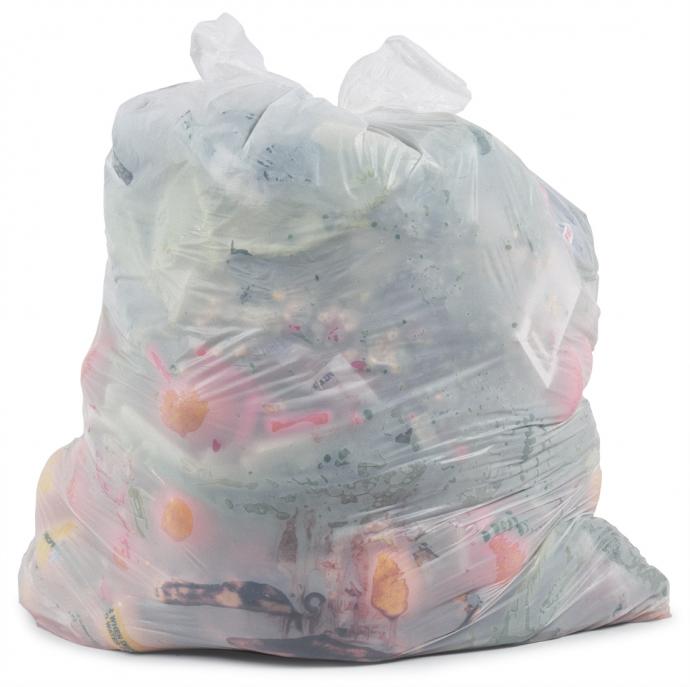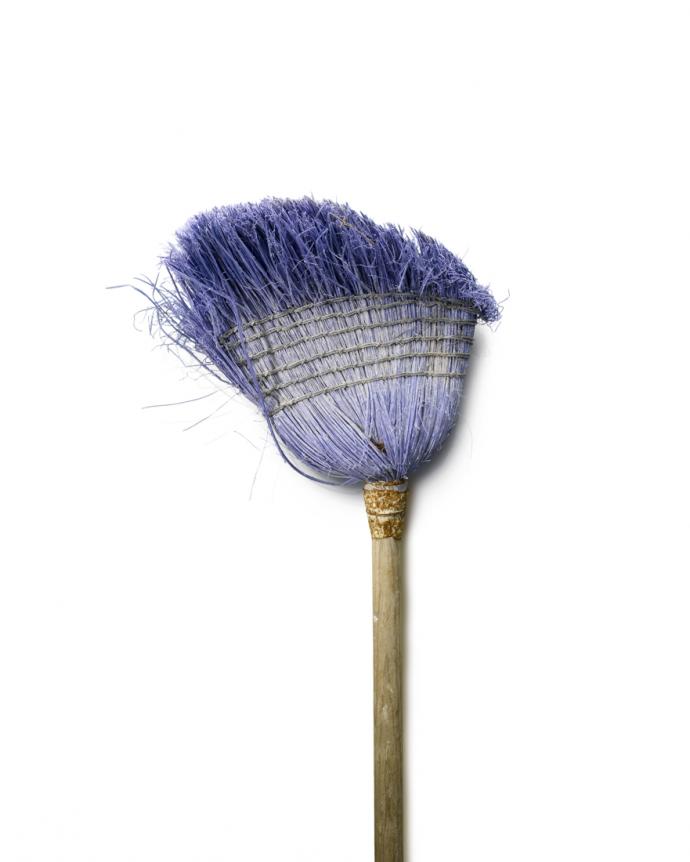from pastelegram.org, June 2011 – April 2014
Chuck Ramirez: Minimally Baroque
Minimally Baroque’s cast of characters stages a quirky and elegant eulogy befitting the late Chuck Ramirez (1962-2010). Oscillating from solemn to buoyant, the subjects of Ramirez’s mini-retrospective at San Antonio’s Blue Star Contemporary Art Center testify to his gift for reanimating the obsolete and salvaging metaphor from the discarded.

The pigment ink prints of the Trash Bag series come in three varieties: black, white, and vegan. Vegan, the smallest photograph in the series of five at 2½ by 3 feet, is uniquely colorful. Filled with leafy green vegetables and orange and red fruit, the white plastic sack swells with the first soggy signs of decay. But a pack of Marlboro Lights appears among the healthy “vegan” contents. If this Vegan is middle-aged, hopeful yet with vices, the black and white trash bags suggest personalities at other stages in life. The unknown and angular objects in Black Sack 1 (1998) wrestle energetically and stretch the black plastic to mannerist effects. The black forms exude attitude and naiveté, like a young teenager striking a pose for the camera, all elbows and hips. In White 2 (2001), an assortment of white folded linens stretches a plastic trash bag into a sturdy mound. The plastic carapace arrests movement and suffocates the particularities of the white textiles within it. Resigned to its lumpy fate, White 2 seems a stoic testament to the banalities of adulthood. White in white on white is pretty vanilla.

There is no expectation of reverence bound to the image of a broom. Yet Ramirez’s Brooms of 2007, printed on resin-coated paper and mounted on large sheets of luminous plexiglass, demand it. Nine photographs of worn brooms standing flush against stark white backgrounds line the gallery’s back wall. The three central besom brooms, hand-made with natural materials, might inspire an ethnographic reading or even reinforce some crazy idea about the noble poor. Framing this somber central grouping, broomheads of synthetic bristles appear in neon colors; their shapes determined by repetitive sweeping, the frayed purple, green and orange heads cock with punk intent. Photographing this suite of discarded brooms, Ramirez elegizes these forgotten objects of labor, prompting a consideration of the men and women who were objects of these implements themselves.2
- 1. I refer to myth here in historical terms, alluding specifically to the Catholic Church’s widespread creation of local patron saints during the medieval period (reliquaries expressly created for the purposes of church fund-raising) as well as in semiological terms, in which we can understand myth as an all-encompassing and reductive mode of signification detailed by Roland Barthes in “Myth Today,” Mythologies, 109-158.
- 2. See “Estranged Labor” in Karl Marx and Frederick Engels. Economic and Philosophic Manuscripts of 1844 and the Communist Manifesto. Amherst, N.Y., 1988, p 69-84.
- 3. Ibid, 71.